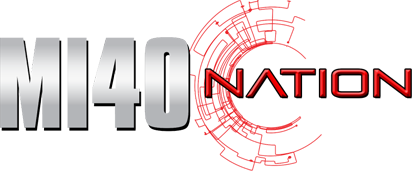Pre and Intra Workout Nutrition
When hypertrophy (muscle building) is your main goal, the food and nutrients you consume around the workout is by far ...

When hypertrophy (muscle building) is your main goal, the food and nutrients you consume around the workout is by far ...
Are the results of your bench pressing, sore shoulders & a flat chest? Time to do things right. Here Ben ...
Bodybuilders, and indeed all athletes looking to secure the performance edge would have at least a passing knowledge of the ...
In preparation for writing this article, I wanted to see what exactly was written out on the web when it ...
The ‘BURN’... both masochistically loved and hated at the same time. We’ve all felt it. We’ve all heard varying opinions ...
We've all seen the Bruce Lee-types, the small men with profound strength, and the contrary, muscle men that are all ...
The Premise With repeated exposure to more and more demanding workouts, our muscles are forced to respond by becoming larger ...
Is fructose REALLY an enemy to fat loss? Does this particular type of sugar REALLY impact body composition to any ...
Vitamins and minerals are essential nutrients that help you maintain optimal health by regulating your metabolism, hormones, and aiding in ...
Could the numerous benefits of this often overlooked amino contain the key to unlocking your gains? From growth hormone stimulation ...
Carbohydrates always seem to be a hot topic when it comes to losing fat or building muscle – or both. ...
Bloated stomach? Endless flatulence? Wicked diarrhoea? Believe it or not, you don’t have to live with these symptoms. Ever wonder ...
Don’t miss Part 1 here.
Pulling it All Together and Where to Start
If you’ve been training for strength pounding away in the 3-5 rep range at 85% of 1 Rep Max and up, or if you’ve just finished a peaking phase, you need to train for hypertrophy. You need to spend some time in the lower intensity zones (55-70%) and higher rep ranges of about 6-10 (1).
The process of muscle growth is best stimulated with high volume rather than heavy weights.
Training at too high an intensity (80% of 1 RM) non-stop is so fatiguing on the body that the adequate volume for muscle growth cannot realistically be achieved (1, 2). This holds true during a meet prep phase especially. There is likely to be muscle “loss” in the areas are not highly prioritized when performing the squat, bench, or deadlift.
 During a meet prep you are teaching the body to become highly specialized at performing a single rep at the cost of losing various other qualities. Yes, you may use your rear delts for example during a bench press, but without some direct stimulus they will reduce in size.
During a meet prep you are teaching the body to become highly specialized at performing a single rep at the cost of losing various other qualities. Yes, you may use your rear delts for example during a bench press, but without some direct stimulus they will reduce in size.
So, right after a meet is the best time to start a hypertrophy training phase for a strength athlete, and vice versa for a bodybuilder. If you’ve noticed that your progress has slowed or even stalled, it may be time to pick up something heavy for a few weeks (at least 3).
How I’m Using “Phase Potentiation” (1) and Hypertrophy for my Personal Program
After coming back from Boss of Bosses 2, I immediately reviewed my training log to evaluate and see where I needed to improve.
I normally pick two areas and prioritize them, but this time I chose 3:
Increasing My Work Capacity
I have to get in shape. The meet was long and I am a seasoned competitor – I was not prepared for it like I should have been. From the time I attempted my first squat during the meet, to the time I attempted my first deadlift, 7 hours had passed. I have been in long meets before so I have no excuse… I need to be prepared.
After reviewing my training log, my squat and deadlift preparation was the best it has ever been; I was conservative with my percentages, and I hit every number I planned on hitting during my prep – I even made a couple of small jumps in my numbers towards the end of the meet prep because everything felt light and looked good on film. My bench was an entirely different story. I was going too heavy too early and things started to fall apart towards the end causing me to really have to cut back on training the bench press like I wanted too.
You can’t just keep going up all the time you have to bring it down and let your body recover.
If I’m going to continue to improve and increase my work capacity, I’m going to have to really turn up the volume and decrease the intensity (60-75%). I’m really going to build a good solid base for those strength training phases.
 workout, 1-2 exercises every time. It may be a Dumbbell row, or just a cable face pull, but I do something for my back every workout.
workout, 1-2 exercises every time. It may be a Dumbbell row, or just a cable face pull, but I do something for my back every workout.Improve My Weaknesses (do what I’m not good at)
I’m going to use variations of compound movements to bring up my weaknesses.
Increase Muscle Mass
All of my work during this training phase will be done in the 6-10 rep range at 55-75% intensity. With this type of volume and the frequency turned up, I’ll need to make sure I’m provided with enough calories to support this type of training. Now is not the time to get fat! There is never an excuse for my body fat to travel so high that I’m no longer hormonally efficient.
For now, this will give you some very important concepts that go into my off season training cycle, and how and why strength athletes should be using hypertrophy in their programs.
In following articles I will go into further detail with my current program and what it looks like, but it is important that you understand some of the concepts first. I will also go more in-depth into the 7 principals as they apply to my program, and how you can use them in your own program.
Until next time
Adam Miller – MI40 Strength Coach
Resources:
(1) Israetel M, Hoffman J, Smith CW. Scientific Principles of Strength Training: with Application to Powerlifting.
(2) Siff MC. Verkhoshansky YV. Supertraining. 6th ed Verkhoshansky.com